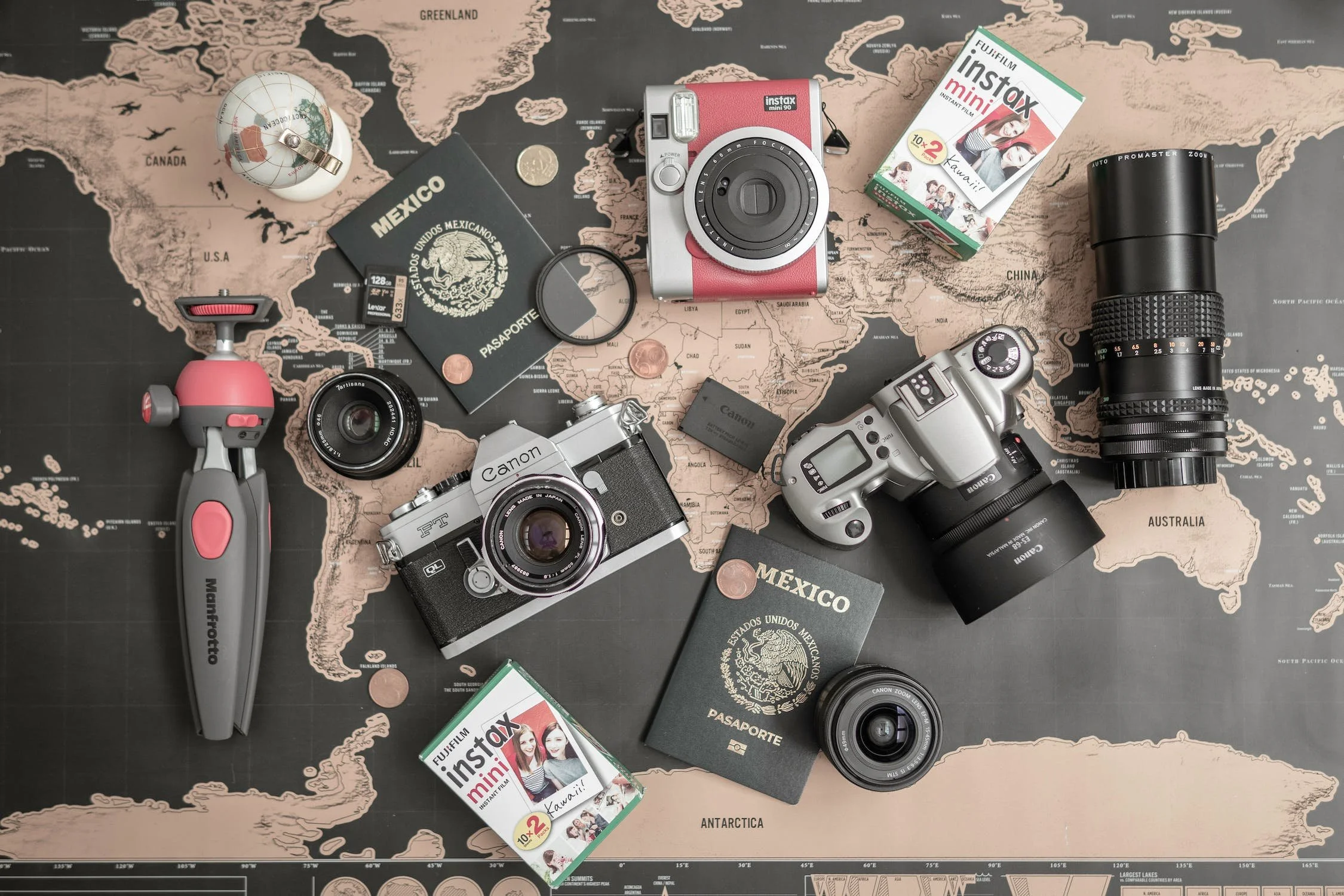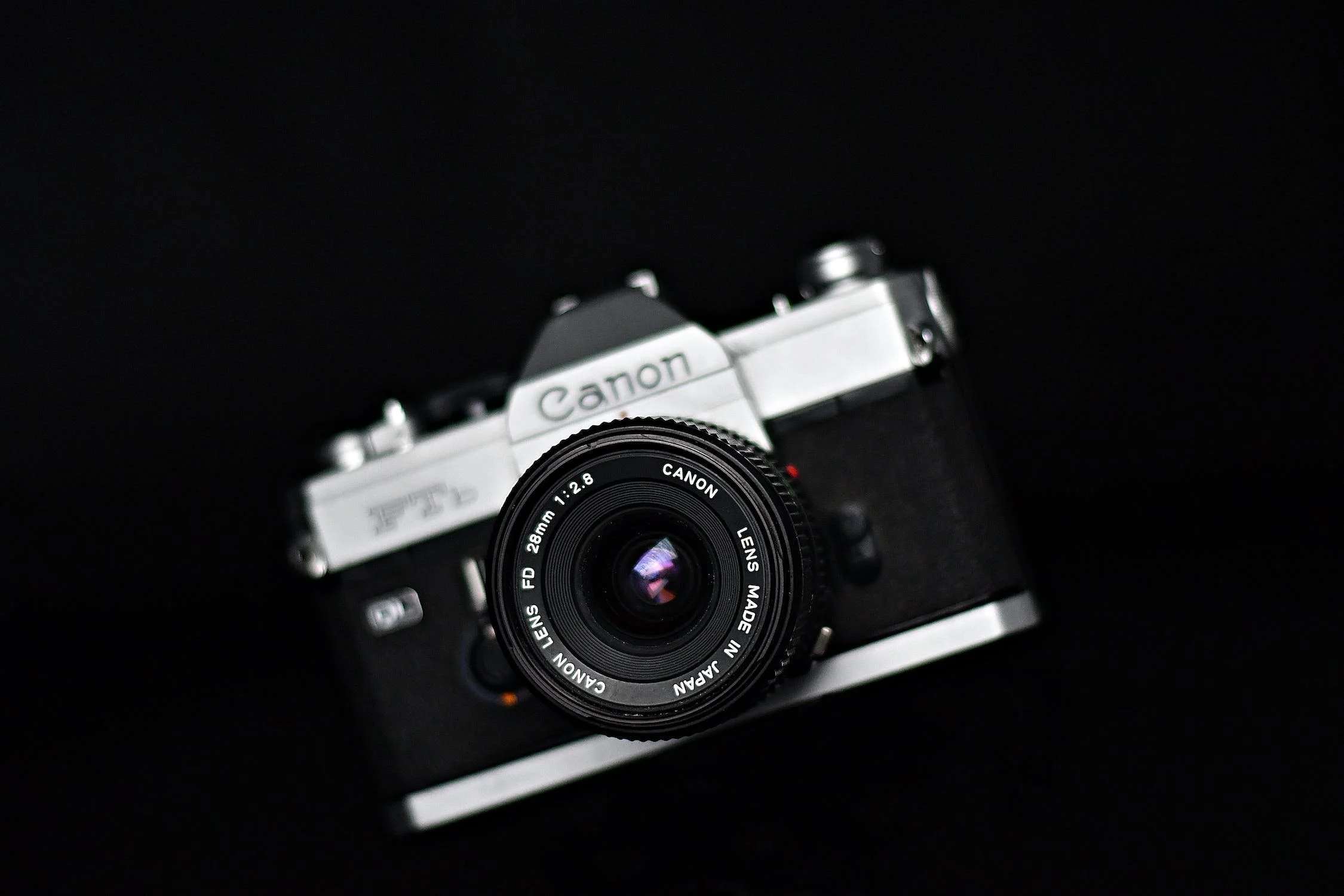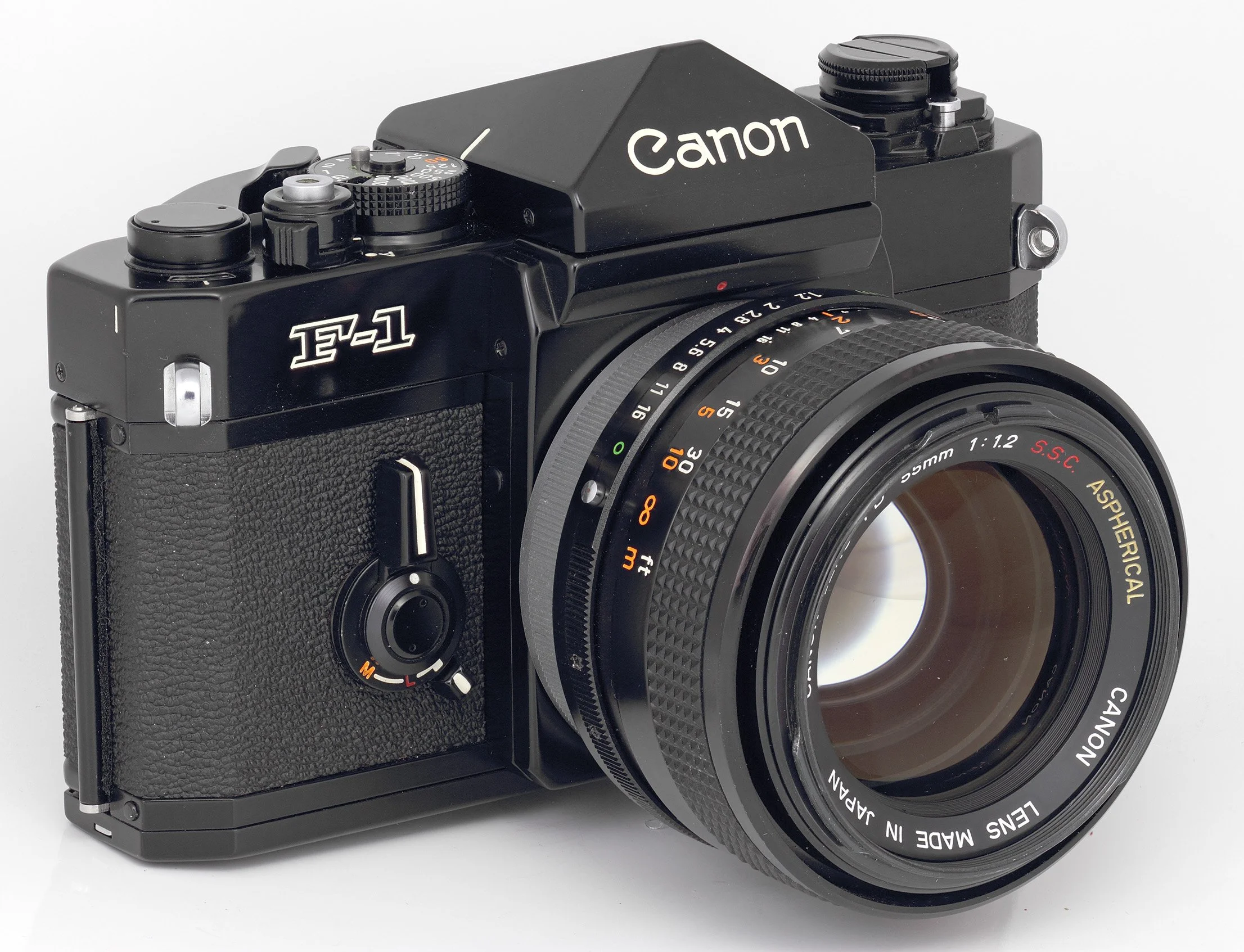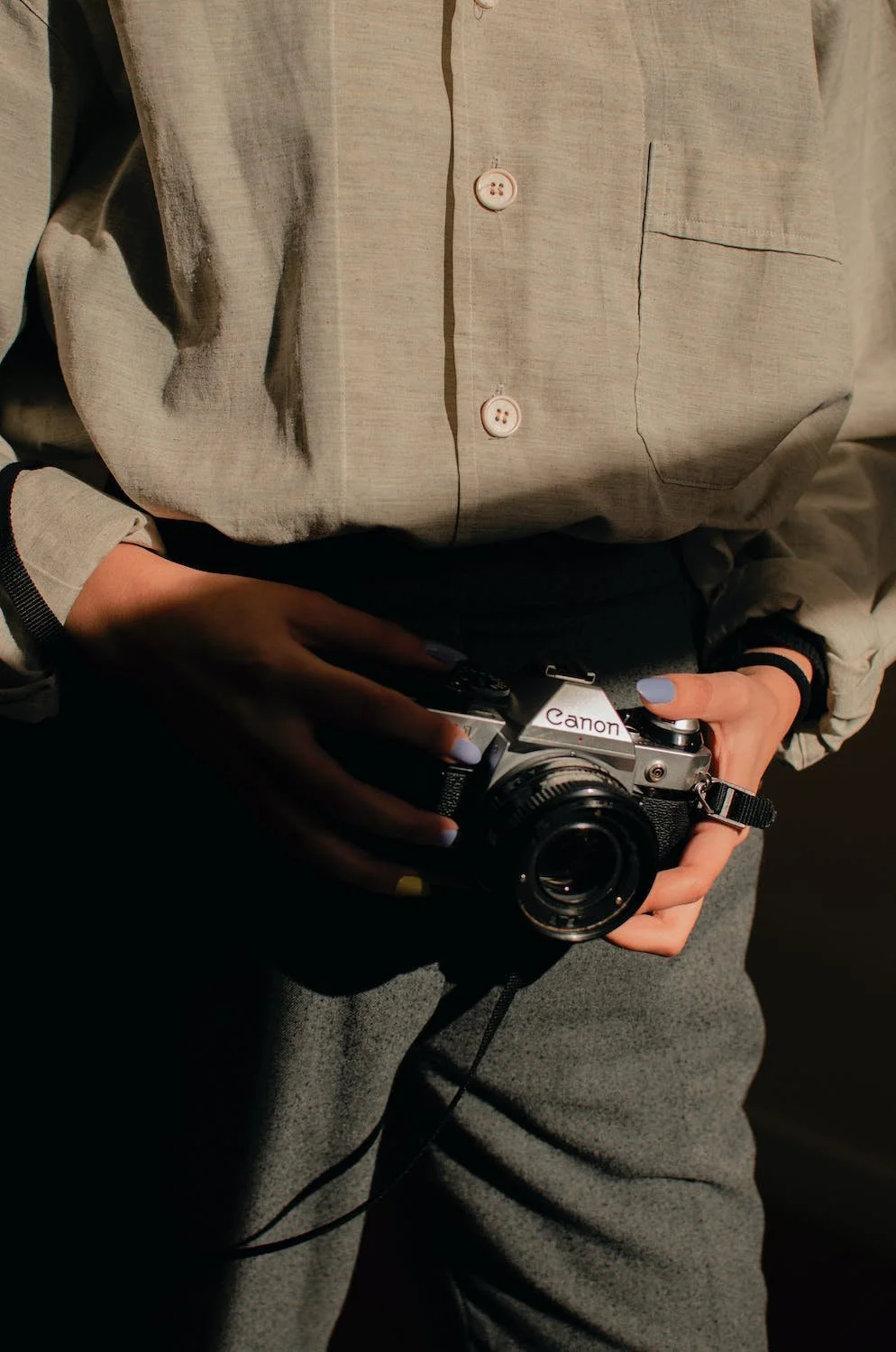History of Canon: From Humble Beginnings to Global Powerhouse
For decades, Canon has stood tall as a leading camera brand, consistently delivering innovative and high-quality products to photographers around the world. From its humble beginnings in Japan to its current status as a global powerhouse, Canon has made its mark on the world of photography by pushing the boundaries of technology and design.
The Birth of Canon (1930s-1940s)
The story of Canon as a camera brand begins in 1933, with the founding of the Precision Optical Instruments Laboratory in Tokyo, Japan. Established by Goro Yoshida and Saburo Uchida, the laboratory aimed to develop high-quality cameras that could rival the dominant European brands of the time.
Their dedication to precision and innovation led to the introduction of the Kwanon in 1934, Japan's first 35mm focal-plane-shutter camera. The Kwanon, named after the Buddhist goddess of mercy, was a groundbreaking achievement for the fledgling company and laid the foundation for future success in the camera industry.
As the company continued to grow and refine its products, it became apparent that a new name was needed to better represent its identity and vision. In 1947, the company was officially renamed Canon Camera Co., Inc., with "Canon" being a phonetic adaptation of the original "Kwanon" name. This marked the beginning of a new era, as Canon set out to make a name for itself in the world of photography.
Innovations and Expansion (1950s-1960s)
Canon's first foray into the world of single-lens reflex (SLR) cameras came in 1959 with the introduction of the Canonflex. This was a significant milestone for the company, as SLR cameras were quickly becoming the preferred choice of photographers for their versatility and ease of use. The Canonflex featured interchangeable lenses and a quick return mirror, enabling photographers to accurately preview and compose their shots through the viewfinder. Although the Canonflex did not achieve widespread commercial success, it marked the beginning of Canon's journey as an innovator in the SLR camera market.
In 1961, Canon took another major step forward with the release of the Canonet, a high-quality rangefinder camera that was both affordable and user-friendly. The Canonet quickly became popular among amateur and professional photographers alike, thanks to its combination of exceptional image quality, ease of use, and affordability. Its success played a crucial role in solidifying Canon's position as a major player in the camera industry, and it paved the way for future innovations in the rangefinder camera market.
One of the most groundbreaking innovations of the 1960s was the Canon Pellix, introduced in 1965. This revolutionary camera featured a fixed, semi-transparent mirror that allowed light to reach both the film and the viewfinder simultaneously. This design eliminated the need for a moving mirror, which in turn reduced camera shake and enabled faster continuous shooting. The Pellix was a testament to Canon's commitment to pushing the boundaries of camera technology, and it set the stage for the company's future advancements in the field of SLR cameras.
The Age of Electronics (1970s-1980s)
As the world entered the age of electronics, Canon continued to innovate and adapt to the changing landscape of photography. In 1971, the company released the Canon F-1, an advanced system camera designed for professional photographers. The F-1 boasted a robust and durable build, a vast array of interchangeable lenses, and a modular design that allowed for the customization of various accessories, such as motor drives and viewfinders. The F-1's versatility and reliability made it a popular choice among professionals and helped to further establish Canon as a leader in the camera industry.
The groundbreaking Canon AE-1 was introduced in 1976, marking a significant milestone not only for Canon but also for the world of photography. The AE-1 was the first camera to feature a built-in CPU, which enabled the automation of various functions, such as exposure control and shutter priority. This technological advancement made the AE-1 more accessible to amateur photographers, as it simplified the process of taking well-exposed photos without needing extensive knowledge of manual settings. The AE-1's success ushered in a new era of electronic cameras and solidified Canon's reputation as an innovator in the field.
The 1980s saw Canon further embracing electronic technology with the introduction of the T series. Launched in 1983, the T series marked a significant transition for Canon, as these cameras incorporated electronic control systems for aperture, shutter speed, and focus. The T series offered photographers greater control over their images and a more seamless shooting experience, paving the way for future advancements in camera technology. This shift towards electronic control not only demonstrated Canon's commitment to innovation but also played a pivotal role in shaping the future of the camera industry.
The Dawn of Autofocus (1980s-1990s)
The 1980s marked the beginning of a new era in photography with the advent of autofocus technology. Canon was at the forefront of this revolution, introducing the Canon T80 in 1985, the company's first autofocus SLR camera. The T80 featured three autofocus lenses, providing photographers with greater ease and convenience in capturing sharp, well-focused images. While the T80 was not a commercial success, it was a stepping stone for Canon in developing more advanced and refined autofocus systems in the years to come.
In 1987, Canon unveiled the EOS (Electro-Optical System) with the launch of the EOS 650. The EOS system represented a significant breakthrough in camera technology, offering a fully electronic lens mount and seamless communication between the camera and lens. This allowed for faster and more accurate autofocus, as well as improved exposure control and customization. The EOS 650 was the first in a long line of highly successful EOS cameras, which continue to be a popular choice for photographers of all levels today.
The culmination of Canon's advancements in autofocus technology during the 1980s was the legendary Canon EOS-1, introduced in 1989. Designed with professional photographers in mind, the EOS-1 was built for speed and precision, boasting a high-speed motor drive, advanced autofocus system, and rugged construction. The EOS-1 quickly gained a reputation for its exceptional performance and reliability, solidifying Canon's position as a leading camera brand for professionals. The success of the EOS-1 laid the foundation for future generations of professional Canon cameras and further cemented the EOS system as a dominant force in the world of photography.
Embracing the Digital Revolution (1990s-2000s)
As the digital revolution swept across the world, Canon embraced the new technology and ventured into the realm of digital photography. In 1996, the company introduced the Canon PowerShot 600, its first consumer digital camera. The PowerShot 600 offered photographers the convenience of digital imaging without compromising on image quality. The success of the PowerShot series played a crucial role in making digital photography accessible to the masses and further solidified Canon's position as an industry leader.
The turn of the century marked another significant milestone for Canon, as the company made its entry into digital SLR cameras with the launch of the Canon EOS D30 in 2000. The D30 combined the versatility and performance of Canon's EOS system with the convenience and flexibility of digital imaging, providing photographers with a powerful tool for capturing high-quality images. The D30's success laid the groundwork for future advancements in Canon's digital SLR lineup, which would continue to push the boundaries of image quality and performance.
In 2005, Canon introduced the EOS 5D, a game-changer for professional full-frame digital photography. The 5D was the first consumer-priced full-frame DSLR, offering photographers the benefits of a larger sensor, better low-light performance, and increased dynamic range. The EOS 5D quickly became a favorite among professionals and enthusiasts alike, setting a new standard for what digital cameras could achieve and further reinforcing Canon's reputation for innovation and excellence.
Mirrorless Cameras and Technological Advancements (2010s-Present)
Canon ventured into the mirrorless camera market in 2012 with the introduction of the EOS M series. The EOS M cameras offered a more compact and lightweight form factor compared to traditional DSLRs, without sacrificing image quality or performance. The EOS M series helped Canon gain a foothold in the rapidly growing mirrorless camera market and expanded the company's portfolio to cater to a broader range of photographers.
In 2018, Canon made a significant leap forward with the introduction of the EOS R system, the company's full-frame mirrorless lineup. The EOS R system was designed to offer the same high-quality imaging and performance that photographers had come to expect from Canon's EOS DSLRs, but in a smaller, lighter, and more versatile package. The EOS R cameras and RF lenses have garnered praise for their exceptional image quality, autofocus performance, and innovative features, further cementing Canon's position as a camera technology leader.
Canon's dedication to innovation and its commitment to providing photographers with the tools they need to succeed ensure that the brand will continue to be a driving force in the world of photography for years to come.
It becomes clear that Canon has always been committed to pushing the boundaries of photography and empowering photographers to capture the world in new and exciting ways. From its humble beginnings in the 1930s to its current status as a global powerhouse.








